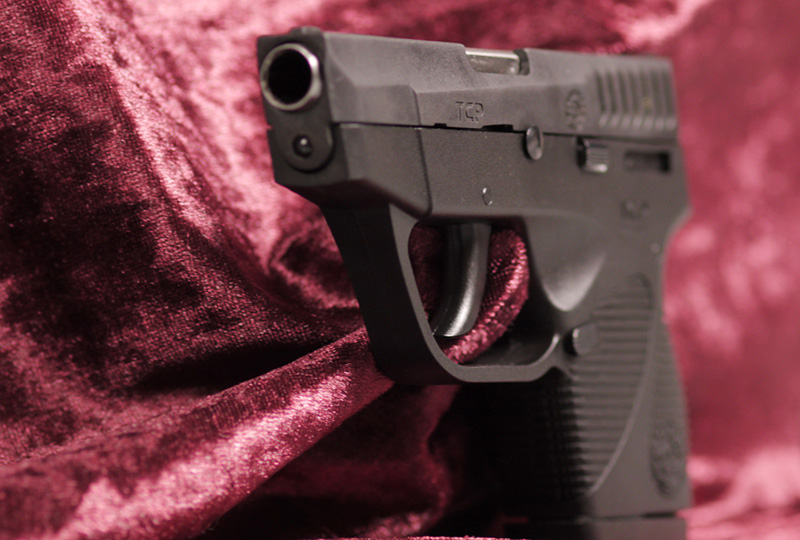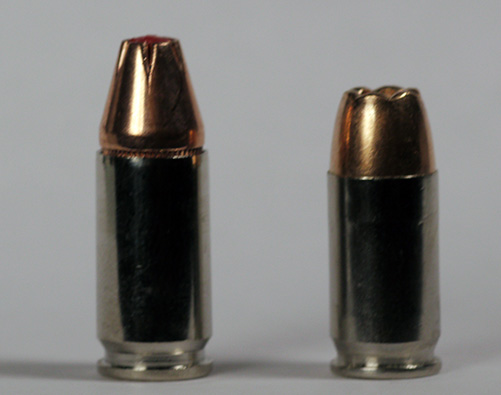Been doing some thinking about pocket holsters. A pocket holster is (obviously) just one of many ways that people can choose from to carry a concealed pistol, among other choices such as inside-the-waistband (IWB), outside-the-waistband (OWB), “deep concealment”, shoulder holster, ankle holster, all sorts of choices…
But the pocket holster is particularly appealing to me from an aspect of comfort. It’s so easy to just drop a TCP or XDS in your pocket (in its appropriate pocket holster, of course). There’s never an issue with how you have to sit, or worries about your shirt riding up and exposing the pistol, or anything like that. If you’re used to carrying a phone and a wallet and keys in your pockets, then putting a pocket pistol in a pocket holster is about the most comfortable, easy, and natural way to carry a pistol.
Except…
There’s one thing that kind of bugs me about a pocket holster. And it’s that, when using a pocket holster, you frequently violate Rule #1 of Gun Safety: Always Keep The Weapon Pointed In A Safe Direction.
You see, when you’re standing or walking, and your gun is in a pocket holster, the muzzle is pointing down at the ground. But when you sit down… now the muzzle is pointing forward. And if you’re sitting behind someone (as in rows of chairs) or across from them (across the lunch table maybe) you now have a loaded gun pointing right at them.
Does this bother anyone else? It bothers me. Not a lot, because I know a quality pocket holster is safe, but still, my Spidey-sense tingles just a little bit now and then. I sometimes find myself consciously rotating the pistol and holster in my pocket, to be pointing down even while seated.
Now, I know this is a topic upon which reasonable people can disagree. I don’t believe a gun will “go off” by itself, without the trigger being pulled (unless maybe you’re foolishly disassembling or working on it with a round in the chamber). So just sitting in a holster, in the pocket, it should be perfectly safe, as long as the trigger is fully covered and cannot be accidentally manipulated (i.e., keep your keys out of the pocket that has the pistol!)
But even so — using a pocket holster still results in a loaded pistol pointing at another person (or many people, depending on where you’re sitting). And even though I know (and I KNOW) that it won’t “go off”, just like I know that swimming in the ocean will not result in me being bitten by a shark), I also know that I am less likely to be bitten by a shark when in my living room, y’know? The odds of something happening are infitesimally small, but the consequences are so profoundly significant, that I can’t help but think about it sometimes. It’s like fire insurance on a house — the odds of your house burning down are so incredibly rare, but the cost and impact so enormous, that most of us carry fire insurance, right?
So every once in a while, I get just a little tiny bit uneasy about the idea of a pocket pistol potentially pointing at someone else…
IWB/OWB or ankle holster usually means the pistol is pointing down, whether standing or seated. With the pocket pistol, it may very well be pointed at someone. Is it dangerous at that point? Well, it is in a holster, with the trigger completely covered, and therefore it should be perfectly safe. I’ve been pocket-carrying for quite a while and never had an accidental or negligent discharge, nor do I ever expect one to happen. Then again, I’ve crossed many, many streets and never been hit by a car, but I still recognize that people do get hit by cars…
It’s impossible to prevent every possible risk, and you’d drive yourself crazy trying; a reasonable person will take reasonable precautions to minimize likely risks and then get on with life. In my mind, that includes:
- Always keep the pistol in an appropriate, well-fitting holster
- Always use a holster that completely covers the trigger
- Never put anything else in the pocket that has the pistol
Follow those three rules and I think it’s reasonable that you should avoid any substantial risk of the pistol firing unintentionally. I have seen (and I’m sure you have too) pocket holsters that have a cutout for the trigger; I guess they’re designed such that you could fire from the pocket, but to me that’s such a potentially dangerous scenario for a negligent or accidental discharge that I would never want to use such a product.
Which brings me to the Recluse holster. I’m currently using a Desantis SuperFly for my TCP, and the Crimson Trace “freebie” holster for my XDs, but that’s really not any good so I am entertaining getting a new pocket holster for my XDs… because I really do prefer pocket carry. The XDs is a tad big for a pocket, but it can be done. And I like that the XDs has a grip safety as well as trigger safety which should further minimize any potential for an accidental discharge down to, in real world terms, zero risk. But the Taurus TCP has neither of those; no manual safety at all. It relies soley on its long, long trigger pull as its safety. Which is fine, as long as the pistol is in a fully-trigger-covering holster, but …
Have you seen the Recluse? This is a really interesting holster idea. Most holsters rely on the shape of the holster to hold the pistol in place, whether it’s leather or kydex that’s formed to grip the pistol firmly. But the Recluse is different — it uses a molded urethane block to hold the gun basically by the trigger guard, while completely immobilizing the trigger. The trigger is literally trapped between two chunks of urethane rubber, such that it would be physically impossible for the trigger to move at all.
That seems really appealing. Especially for a pistol like the TCP that has no other manual safety. If the trigger is physically incapable of moving, there’s no way that pistol is going to “go off”!
I also like that the Recluse (depending on the pistol and model of holster) has room for a spare magazine; especially with a little .380, you may very well need more rounds, and there’s nothing as convenient as having that mag already with the pistol, in the holster, taking up no more space (in terms of practical real estate). And, finally, the Recluse features an anti-printing design, so it looks like a wallet in your pocket, not like a gun.
Potential downsides? Well, I’m not thrilled that it’s a one-sided product — the anti-printing flap on one side, and — nothing on the other. The pistol is completely exposed inside your pocket, held in place against the anti-printing flap by that urethane block. I don’t know, I just like the idea of it being encased in a full holster, like the Desantis Superfly. With it exposed, it just seems like it’s an opportunity for lint or dust or whatever to get in there, and … well, should I be concerned that it could potentially fall off the urethane trigger block, to where it’s floating loose in the pocket? That would be a bad situation… Note, I don’t believe that’s a practical consideration; the reviews I’ve read say that the urethane block holds the pistol very securely and it takes an intentional act to remove it from the trigger block, but … really, how hard would it be for them to make it two-sided? They make a two-sided version for the XDs, but the way it’s worded on their site I don’t think the two-sided versions offer the urethane trigger block.
No answers yet; just musing out loud. I think the idea of the trigger block would be a comfort to those of us who carry pistols that don’t have manually-engaged safeties (such as the TCP or Glock). And that additional layer of safety (a completely immobilized trigger) may be the extra bit of reassurance necessary to get me to ease my occasional worry about being seated with a pocket pistol.
In the meantime, I’m using the aforementioned Desantis Superfly and I will say, it’s been totally fine and actually I like it a lot. It’s very compact, the anti-printing flap works well, and it holds the pistol securely but it’s supremely easy to draw from. And the holster stays absolutely stationary in the pocket when drawing; there’s no slipping or sliding around at all. I give the SuperFly very high marks for pocket carry of a Taurus TCP. I just wonder if the added trigger block of the Recluse would provide just that last little extra bit of reassurance…



